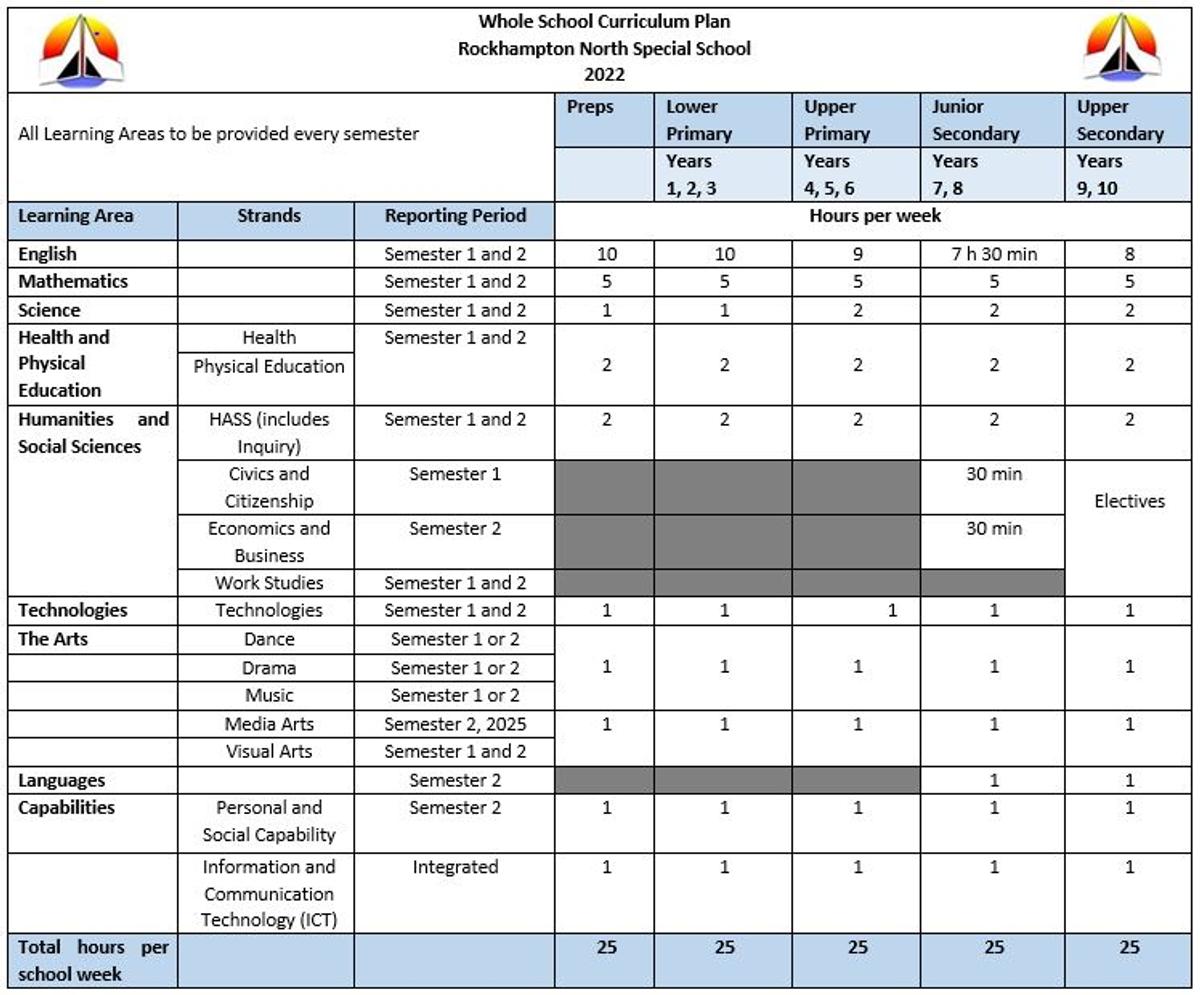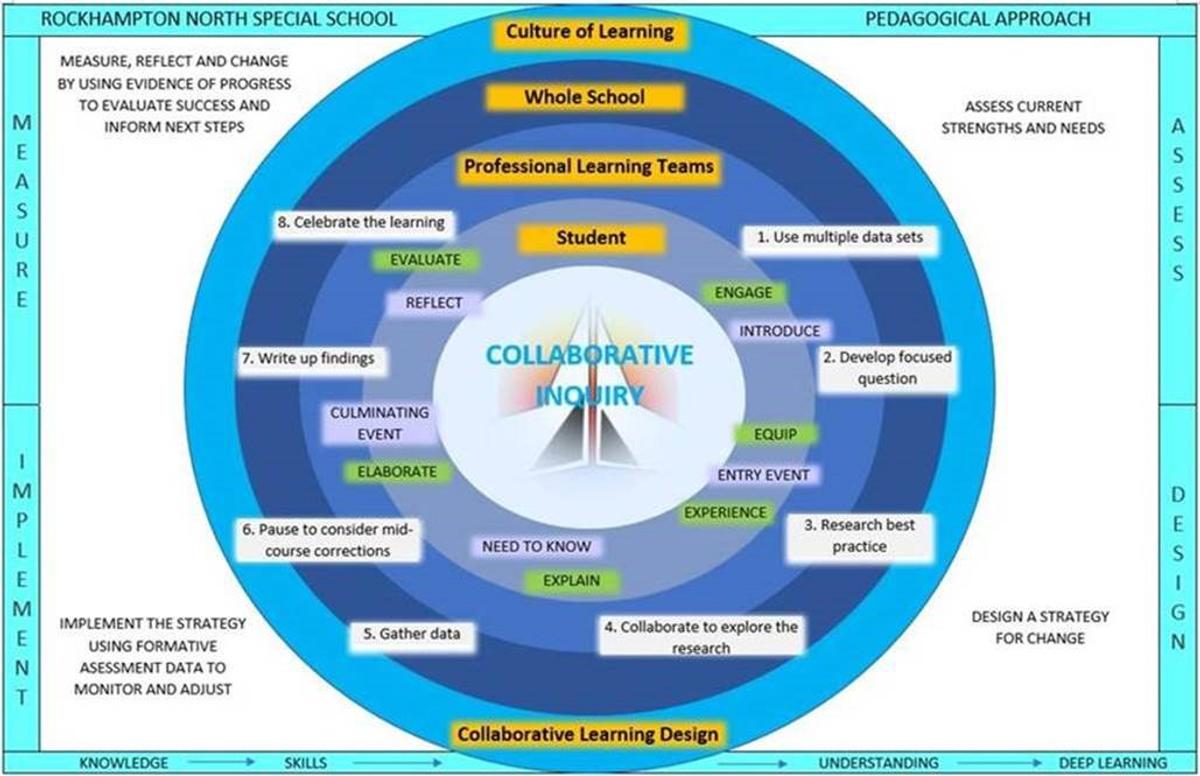Principal's Report

Dear Community Members,
Whole School Curriculum Plan
The Prep –Year 12 Curriculum, assessment and reporting framework specifies the requirements for all Prep to Year 12 Queensland state schools to deliver a world-class education.
The key focus areas of our Whole School Curriculum Plan are to support the:
• right of every child to access education, primary and secondary, appropriate to their needs;
• provision of a high quality education supporting every student to succeed through each stage of schooling in a safe and supportive learning environment; and
• success and wellbeing of all students through inclusive education responsive to the needs of diverse learners.
Our Whole School Curriculum Plan aligns the improvement initiatives with the Every Student Succeeding – State Schools Improvement Strategy and the Every student with disability succeeding plan, so as to lift the performance of our school, teachers and students. We are busy with the development of our Annual Implementation Plan for 2022 to determine a sharp and narrow focus. Thank you to the families who completed the Parent Opinion Survey which informed many of our decisions around school improvement. We continue to invite our community to provide suggestions on how we can promote our school vision to create meaningful community engagement opportunities.
We have developed the following Whole School Curriculum Plan to ensure access and participation for all students in accessing the curriculum alongside their similar-aged peers; and achieving through learning with tailored supports and reasonable adjustments that meet every child learning needs.
Whole School Pedagogical approach
Pedagogy is how teachers teach and students learn at each stage of schooling in an inclusive education system. Pedagogy is an integral part of systematic curriculum delivery which teachers employ through collaborative work in Professional Learning Teams.
During workshops and planning days our staff investigated Age Appropriate Pedagogies. We investigated which elements align with our vision to build new understandings through creating conditions for deeper learning. Through evidenced based research we propose Project Based Learning which will enable our students to be thinkers and active participants in their learning. Towards the middle of Term 2 and Term 4, our staff will be sending out invitations to our school community to be part of the celebrations of learning through a ‘Culminating Event’. This event will be the end result of all the learning that students did over the course of the Semester. Through Project Based Learning, we hope to create an active school community where our parents, carers and other members of our community are active contributors in our learning journey. An environment where every student is engaged, challenged, feels safe to take risks in learning and is supported to develop the knowledge, skills and dispositions necessary to succeed.
Over the course of next year we will further unpack what effective teachers do in classrooms to engage students in challenging work.
Below is our Collaborative Inquiry Model which underpins our pedagogical approach. The Collaborative Inquiry Model provides an overview of the learning cycle and breaks it down into five phases of instruction: Engage/ Equip, Experience, Explain, Elaborate and Evaluate. Our Collaborative Inquiry Model enables teachers to maintain a line of sight between students learning, their own professional development and school wide improvement in order to create a culture of learning.
Professional Learning Teams
Our staff will be working in Professional Learning Teams from next year onwards. Professional Learning Teams are an approach to school improvement where groups of teachers work collaboratively at the school level to improve student outcomes. Professional Learning Teams start from a simple idea: students learn more when their teachers work together. Building a PLT is a proven way for schools to increase student learning by creating a culture that is:
- focussed on continuous improvement by linking the learning needs of students with the professional learning and practice of teachers
- committed to professionalism
- fuelled by collaborative expertise.
We have sent out an Expression of Interest for PLT Leaders and had a significant number of staff who indicated an interest in leading PLT’s. We have appointed a PLT Leader for every team in our school. Over the past month we have met with the PLT leaders in developing their capacity to lead teams. Additionally, we are strengthening our partnership with North Rockhampton High School and especially the principal, Kurt Goodwin, who has led the initiative of High Performing Teams in Central Queensland region. He will be working closely with our leaders in leadership development. Kate Harvey is leading our Professional Learning Team program.
So, if staff and newsletters refer to PLT 1, PLT 2, PLT 3 etc, staff are referring to the teams they will be working in next year. This is a very exciting and new journey for us at Rocky North Special School and I am looking forward to be working closely with our school community in the development of High Performing Teams resulting in a High Performing School.
Healthy Lunches
As we are heading towards the end of the year and most of our students are showing signs of being tired, it is vital that families pack good healthy and nutritious lunches. A child’s success in many areas, including school, can be affected by having a healthy school lunch. Benefits to eating healthy should not be taken for granted when considering what children are eating for lunch. Packing a healthy school lunch for your child will benefit your child in many ways.
Most families are busy, so it’s good to look for tasty, simple and easy lunch box options. You can make sandwiches or homemade snacks like healthy muffins or pancakes the night before or on the weekend, freeze them and pop them into the lunch box each day. Fresh fruit, stewed fruit in natural juice, a small serve of dried fruit, muesli, yoghurt, pieces of cheese, fruit bread, rice cakes, pikelets and wholegrain crackers all make nutritious snacks.
Kids usually want to eat quickly so that they can play. So, keep it simple. Choose foods that are simple and easy to eat. Some children might not want to spend time on fiddly packaging or food that makes their hands sticky. Make sure that containers seal well but can be opened easily – do a test at home. It might be that your child isn’t eating lunch because it’s hard to get at!
A healthy lunch box full of fresh food gives your child energy to play, concentrate and learn all day. How much you put in your child’s lunch box depends on the length of your child’s day. It’s also a good idea to pack a bottle with tap water for your child to drink and refill. Fruit juice and soft drinks are high in sugar and aren’t recommended for children because they can lead to tooth decay and other health problems.
Some tips to help get your kids involved include:
- Talk to your children about what they would like to have in their lunchbox. Discuss healthier food and drink choices and decide what will be in the lunchbox together.
- Write a shopping list together. Take your children shopping with you and let them choose foods and drinks from the shopping list.
- Encourage your children help prepare their lunchboxes. Older children may be able to prepare most of their lunch themselves, and younger children can help with making sandwiches or cutting up soft fruit. It is a good idea to prepare lunchboxes the evening before to allow children to participate.
Term 1 of next year we will be having a Healthy Lunchbox drive and suggestions in preparation for next year will be highly appreciated. Please find below a link to tips on healthy lunchboxes.
https://www.betterhealth.vic.gov.au/health/healthyliving/healthy-eating-school-lunches
Have a lovely week to all members of our school community.
Warm Regards,
Dehlia


